15-4. The star β Tucanae (*6.4)
was in the day after α
Phoenicis (Ankaa, *5.0) and six days later was λ Tucanae
(*12.4):
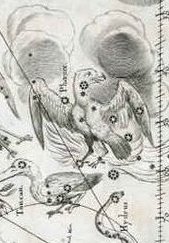
 |
 |
 |
 |
|
Eb5-21 |
Eb5-22 |
Eb5-23 |
Eb5-24 (173) |
|
ihe romi
hia |
e moa ure tupu
hia |
hetu
ki te ragi |
te
kiore - te henua |
|
THE SUN: |
|
Julian equinox (*4) |
March 26 (365 + 85 = 450) |
27 |
28 (*372) |
|
... When Julius Caesar
established his calendar in 45 BC he set March
25 as the spring equinox. Since a Julian year (365.25 days)
is slightly longer than an actual year the calendar drifted with
respect to the equinox, such that the equinox was occurring on about
21 March in
AD 300 and by AD 1500 it had reached 11 March. This drift induced
Pope Gregory XIII to create a modern Gregorian calendar. The Pope
wanted to restore the edicts concerning the date of Easter of the
Council of Nicaea of AD 325.
(Incidentally, the date of Easter itself is fixed by an
approximation of lunar cycles used in the Hebraic calendar, but
according to the historian Bede the English name 'Easter' comes from
a pagan celebration by the Germanic tribes of the vernal - spring -
equinox.) So the shift in the date of the equinox that occurred
between the 4th and the 16th centuries was annulled with the
Gregorian calendar, but nothing was done for the first four
centuries of the Julian calendar. The days of 29 February of the
years AD 100, AD 200, AD 300, and the day created by the irregular
application of leap years between the assassination of Caesar and
the decree of Augustus re-arranging the calendar in AD 8, remained
in effect. This moved the equinox four days earlier than in Caesar's
time ... |
|
No
star listed (4) |
ANKAA =
α
Phoenicis,
κ
Phoenicis (5.0)
ALPHARD (α
Hydrae |
λ Phoenicis (6.3), β Tucanae (6.4)
*6.4 - *41.4 = *147.0 -
182.0 =
-
*35.0 |
ANDROMEDA GALAXY (M31),
π Andromedae (7.7) |
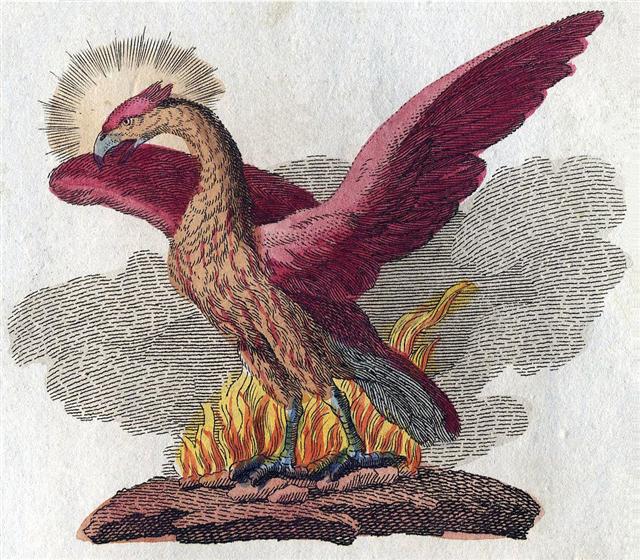 |
According to Manuscript E the
Explorers arrived to Easter Island
in 'June 1'
... On the twenty-fifth day of the first
month (Vaitu Nui), Ira and Makoi set
sail; on the first day of June ('Maro'), the bow of
Ira's canoe appeared on the distant horizon, came
closer and closer on its course, and sailed along, and
finally (one) could see the (new home) land ...
[E:17]
Have I guessed right this should correspond to He Maro
1 meaning when the Sun had risen together with M31
(Messier object listed as number 31, viz. the Andromeda
Galaxy) - a very distant 'land' indeed:

The Andromeda Galaxy is located in the day before the Breast
(of Cassiopeia).
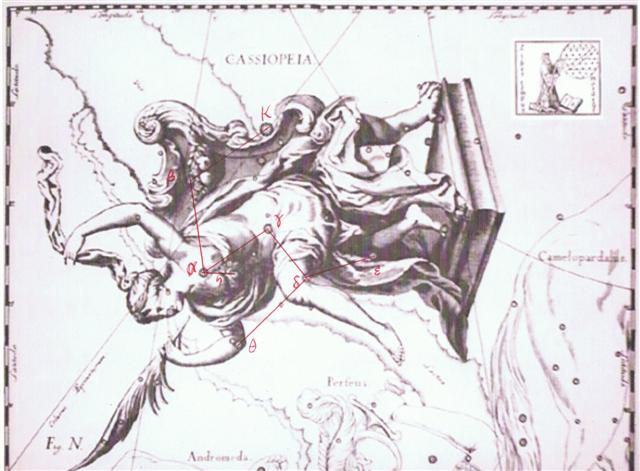
|
He Maro 2 |
3 (153 = 80 + 73) |
4 |
5 |
 |
 |
 |
 |
|
Eb5-25
(326 + 174 = 500) |
→ 3-25 + 1 + 2 months |
Eb5-27 |
Eb5-28 (354 / 2)
|
|
e tamaiti |
nuku maro etoru |
kua puoko i te haú ia |
te henua - te kiore |
|
Tama. 1. Shoot
(of plant), tama miro,
tree shoot; tama tôa,
shoot of sugarcane. 2.
Poles, sticks, rods of a
frame. 3. Sun rays. 4. Group
of people travelling in
formation. 5. To listen
attentively (with ear,
tariga, as subject, e.g.
he tama te tariga);
e-tama rivariva tokorua
tariga ki taaku kî,
listen carefully to my
words. Tamahahine,
female. Tamahine (=
tamahahine), female,
when speaking of chickens:
moa tamahine, hen.
Tamâroa, male. Vanaga.
1. Child. P Pau.: tama
riki, child. Mgv.:
tama, son, daughter,
applied at any age. Mq.:
tama, son, child, young
of animals. Ta.: tama,
child. Tamaahine (tama
1 - ahine), daughter,
female. Tamaiti,
child P Mq.: temeiti,
temeii, young person.
Ta.: tamaiti, child.
Tamaroa, boy, male. P
Mgv.: tamaroa, boy,
man, male. Mq.: tamaóa,
boy. Ta.: tamaroa,
id. 2. To align. Churchill.
In the Polynesian this [tama
na, father in the Efaté
language] is distinguished
from táma child by
the accent tamā
or by the addition of a
final syllable which
automatically secures the
same incidence of the
accent, tamái,
tamana
... Churchill 2
|
He Maro 1 |
*1 |
He Maro 3 |
*1 |
He Maro 5 |
 |
 |
 |
|
ANDROMEDA GALAXY (M31) |
ξ
Phoenicis (9.0) |
π¹ Orionis (73.0)
|
HAEDUS II |
|
March 28 |
March 30 |
MARCH 30 |
Eb5-28 (354 / 2) |
|
te
kiore - te henua |
nuku
maro etoru |
te henua - te kiore |
Perhaps
nuku maro etoru should
be read as the 3rd in the
'land of June'. We could
then count June 3 (153) - 89
(March 30) = 64. Since the
time of the Golden Bull the
stars had been carried ahead
with 64 right ascension
days. One of the possible
meanings of nuku is
land: Mgv.: nuku,
land, country, place. Sa.:
nu'u, district,
territory, island.
Churchill.
The ancient
names of the month were:
Tua haro, Tehetu'upú,
Tarahao, Vaitu nui, Vaitu
poru,
He Maro, He Anakena,
Hora iti, Hora nui, Tagaroa
uri, Ko Ruti, Ko Koró
....
... Nut, whom the Greeks sometimes identified
with Rhea, was goddess of the sky, but it was debatable if in
historical times she was the object of a genuine cult. She was Geb's
twin sister and, it was said, married him secretly and against the
will of Ra. Angered, Ra had the couple brutally separated by Shu and
afterwards decreed that Nut could not bear a child in any given
month of any year. Thoth, Plutarch tells us, happily had pity on
her. Playing draughts with the Moon, he won in the course of several
games a seventy-second part of the Moon's light with which he
composed five new days. As these five
intercalated days did not belong to the official Egyptian calendar
of three hundred and sixty days, Nut was thus able to give birth
successively to five children: Osiris, Haroeris (Horus), Set, Isis
and Nepthys ... |
|
ε Andromedae (8.2), DELTA = δ Andromedae (8.4), SCHEDIR (Breast) = α Cassiopeiae
(8.6), ζ Andromedae, μ
Phoenicis (8.9)
*8.4 - *41.4 = *149.0 -
182.0 =
- *33.0 |
ξ
Phoenicis (9.0),
ρ
Tucanae (9.1),
DENEB KAITOS (Tail of the
Sea Beast) =
β
Ceti,
η Phoenicis (9.4),
AL NITHĀM (String of Pearls)
=
φ¹
Ceti
(9.6)
*9.4 - *41.4 = *150.0 -
182.0 =
- *32.0 |
ACHIRD (Woman with Luminous
Rays) =
η
Cassiopeiae
(10.7) |
Legs-15 (Wolf)
ν
Andromedae (11.0), φ²
Ceti (11.1),
ρ
Phoenicis
(11.2),
η
Andromedae (11.4)
*335.0 = *11.4 - *41.4 |
|
Sept 27 (270 = 266 + 4) |
28 |
29 |
30 (3 * 91 = 273) |
|
March 29 (88 = 84 + 4) |
30 (365 + 89 = 454) |
31 |
April 1 (91 = 456 - 365) |
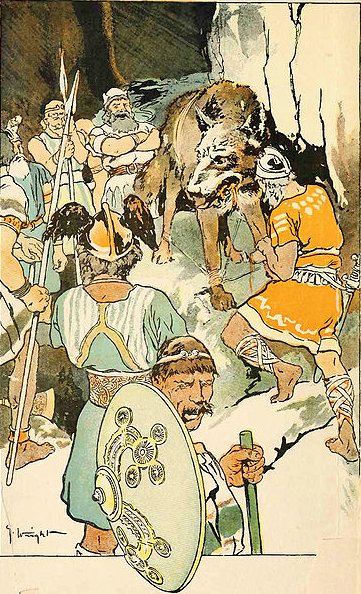
... At
the beginning of 44 B.C. -
when Ceasar was still alive
- the Senate decided to
raise statues of him in all
the temples and to sacrifice
to him on his birthday in
the month Quintilis,
which in honour of him was
renamed July. He was raised
to the status of a god
(among the other gods of the
state) under the name
Jupiter Julius. Marcus
Antonius, who this year was
consul together with Ceasar,
became high priest and
responsible for the
ceremonies. In the middle of
February, at the time of the
old feast of Lupercalia,
he ran around naked (except
for a girdle), and whipped
the Roman ladies with thongs
made from goat-skin [februa],
in order to promote their
fertility
...
The word Lupercalia
ís Latin and refers to an
ancient feast held in
February 15. Lupus is
Latin for Wolf. The Chinese
Legs station which
pointed at a Wolf
happens to be number 15.

In order to
be able to walk on dry land
it is necessary to have
Legs. |
|
α Muscae (190.2), τ Centauri (190.5), χ Virginis (190.7)
ALDERAMIN (α Cephei) |
Al Áwwā'-11 (The Barker)
/
Shur-mahrū-shirū-18 (Front
or West Shur)
SOMBRERO GALAXY = M104
Virginis
(191.1),
ρ
Virginis (191.4),
PORRIMA
=
γ
Virginis,
γ
Centauri (191.5)
*150.0 = *191.4 - *41.4 |
ι Crucis (192.2), β Muscae
(192.5),
MIMOSA = β Crucis
(192.9) |
No star listed (193) |

Wolves do not bark, but
dogs do. |
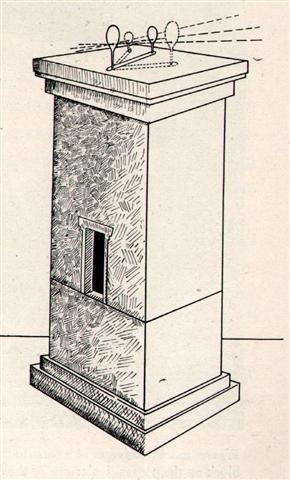 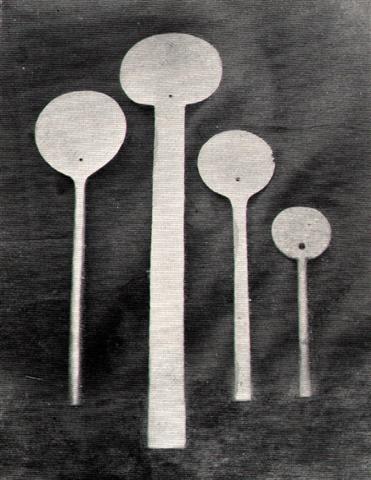
 |
 |
|
Eb5-29 (178) |
Eb5-30 → 2 *
265 |
|
e manu gao takoa |
e
manu kake rua |
|
Gao. 1. Neck. 2. Glans
penis (te gao o te kohio), neck of penis.
Vanaga. Neck, throat, (naho G); gao
pukupuku, scrofula; hore te gao, to
cut the head off; arakea gao, scrofula.
Gaogao, calm. Gaoku, to eat
greedily. Gaopu, to choke on a bone.
Churchill.
Ta. OR. Write, writing.
The name of writing before the term
rongorongo in 1871 became current. Fischer.
1. To tattoo ( = tatú), to tattoo
pictures on the skin, also: he-tá ite kona,
tá-kona. 2. To weave (a net): he-tá i te
kupega. 3. To shake something, moving it
violently up and down and from one side to the
other; he-tá e te tokerau i te maga miro,
the wind shakes the branches of the trees; also
in the iterative form: e-tá-tá-ana e te
tokerau i te tôa, the wind continuously
shakes the leaves of the sugarcane. 4. To pull
something up suddenly, for instance, an eel just
caught, dropping it at once on a stone and
killing it: he-tá i te koreha.
Tá-tá-vena-vena, ancient witching formula.
Vanaga. 1. Of. 2. This, which. 3. Primarily to
strike: to sacrifice, to tattoo, to insert, to
imprint, to write, to draw, to copy, to design,
to color, to paint, to plaster, to note, to
inscribe, to record, to describe, number,
letter, figure, relation; ta hakatitika,
treaty; ta igoa, sign; ta ki,
secretary; ta kona, to tattoo; ta
vanaga, secretary. Churchill. ... the root
ta through its long series of known
combinations carries a strongly featured sense
of action that is peripheral, centrifugal, and
there seems to be at least a suspicion of the
further connotation that the action is exerted
downward ... The secondary sense of cutting will
easily be seen to be a striking with a
specialized implement, and we find this sense
stated without recognition of the primal
striking sense only in Mangareva, Nukuoro, Viti,
and Malekula. In Indonesia this secondary sense
is predominant, although Malagasy ta may
come somewhat close to the striking idea ...
Churchill 2.
Koa. 1. Rori te koa
hogihogi, to follow a scent. 2. Joy.
Koakoa, joy, content, happiness, gay,
satisfaction, hilarity, mirth, to leap for joy,
to please, to fondle, dear; ariga koakoa,
good-humored; hakakoakoa, to rejoice, to
leap for joy. P Pau.: koa, contented,
pleased; koakoa, joy. Mgv.: koakoa,
rejoicing, joy, mirth, to be content, satisfied;
koa, to mourn. Ta.: oaóa, joy,
gladness. Churchill. Pau.: Koari, to
languish, to fade. Mgv.: koari,
half-cooked. Mq.: koaí, rotten,
insufficiently cooked. Koata, a mesh.
Ta.: oata, hole in coconuts, etc. Mq.:
oata, crevice. Churchill. Mgv.: Koai,
a plant. Ta.: oai, the wild indigo. Ma.:
koai, a plant. Akakoana-kohatu, to
make a small shapeless hole. Ma.: kohatu,
stone. Koata, light of the moon shining
before the moon rises. Ha.: oaka, a
glimpse of light. Churchill.
Kake. Kakea, to come
near, to embark. P Pau.: kake, to climb,
to ascend. Mgv.: kake, the arrival of
shoals of spawning fish. Mq.: kake, to
climb up a valley. Ta.: ae, to climb, to
ascend. Churchill. Mgv.: kake, to strike
on an ocean reef. Ta.: ae, to strand.
Churchill. Sa.: a'e, upward, to go up;
sa'e, to elevate one leg, as in the act of
falling in a club match; 'a'e, to ascend,
to rise. To.: hake, upward, to ascend.
Fu.: ake, up, to ascend; sake, ro
raise the leg at one in derision or mockery;
kake, to climb, to ascend. Niuē:
hake,
up, going up. Uvea: ake,
up; kake,
to go up. Ma.: ake,
upward; kake,
to climb, to ascend. Mq.: ake,
on high, upward; kake,
to ascend. Mgv.: ake,
upward. Bukabuka: ake,
up. Ta.: ae,
up, to go up, to ascend, to climb. Ha.:
ae, to
raise, to lift up, to mount. Fotuna:
no-jikijiake,
to lift up; no-tukake,
to stand upright. Nukuoro: kake,
to go up. Nuguria: kake,
up; hanage,
northwest. Rapanui: kake a,
to go abroad. Vi.: thake,
upward; thaketa,
to dig or lift up. Churchill 2.
Rua.
1. Two; second; other (precedes the
noun); te rua paiga, the other side. 2.
Hole, grave; holes in the rocks or between the
rocks of the coastal lagoons; he keri i te
rua, to dig a hole. 3. To vomit. Vanaga. 1.
Two. P Mgv., Ta.: rua, id. Mq.: úa.
2. Nausea, seasickness, to vomit, disgust;
hakarua, to vomit, to spew. PS Mgv.:
aruai, ruai, to vomit. Mq.: úa,
id. Ta.: ruai, id. Pau.: ruaki,
id. Sa.: lua'i, to spit out of the mouth;
lulua, to vomit. To.: lua to
vomit. Fu.: lulua, luaki, id. Niuē:
lua,
id. Viti: lua,
id.; loloa,
seasick. 3. Cave, hollow, ditch, pit, hole,
beaten path, grave; rua papaka,
a ditch. P Pau.: rua,
a hole. Mgv.: rua,
a hole in the ground, ditch, trench. Mq.:
úa, dish,
hole, cavern. Ta.: rua,
hole, opening, ditch. Churchill.
Ta.:
ruahine, an old
woman. Ma.: ruahine,
id. Ta.: ruaroa,
tropic of Capricorn. Mq.: uaoa,
a constellation, the eleventh month. The sense
in Tahiti is probably that of some constellation
which may be used to determine the position.
Ta.: ruau,
an old man, an old woman. Ha.: luau,
a parent. Churchill. |
|
CIH (Whip)
= γ Cassiopeiae,
λ Tucanae (12.4),
φ³ Ceti (12.6), μ Andromedae (12.8)
*336.0 = *12.4 - *41.4
→
4 * 84 |
φ4 Ceti (13.2) |
 |
|
Oct 1 |
2 (275) |
|
April 2 |
3 (2 * 229 =
365 + 93) |
|
... Now birds
and fishes are born under the sign of the Yin,
but they belong to the Yang. This is why
birds and fishes both lay eggs. Fishes swim in
the waters, birds fly among the clouds. But in
winter, the swallows and starlings go down into
the sea and change into mussels ... |
But the Toucan (Tucana) was a modern name given by Johann
Bayer and on Easter Island the name may have been different.
Possibly it was in contrast regarded as a kind of fish:
... The dream soul went on and came to
Tama. She named the place 'Tama, an evil fish (he ika
kino) with a very long nose (he ihu roroa).'
[E:8]
... The principal word for 'fish' in most
Dravidian languages is min, which has an ancient
homophone meaning 'star', both probably derivatives of the
root min 'to glitter' ... Fish are actually unable to
close their eyes, and the fact that 'when the fish sleeps it
does not close its eyes' was noticed by ancient Indians. The
dot-in-a-circle similar to that occuring among the trefoils
of the Harappan priest-king's robe is identical with the eye
of the many small hare- and fish-shaped amulets discovered
on the lower levels of Harappa ... (Asko Parpola, The Sky
Garment.)
Let's fill in a few more of the other dates and stars:
 |
 |
 |
 |
 |
 |
|
Eb5-29 (178) |
Eb5-30 |
Eb5-31 |
Eb5-32 (181) |
Eb5-33 (364 / 2) |
Eb5-34 |
|
e manu gao takoa |
e manu kake rua |
te tagata |
e Rei vage Rei |
manu |
tagata |
|
Oct 1 |
2 |
3 |
4 |
5 (273 + 5) |
6 |
|
CIH (Whip)
= γ Cassiopeiae,
λ Tucanae (12.4),
φ³ Ceti (12.6), μ Andromedae (12.8)
*336.0 = *12.4 - *41.4
→
4 * 84 |
φ4 Ceti (13.2) |
No star listed (14) |
1h (15.2)
β
Phoenicis (15.1),
υ
Phoenicis,
ι
Tucanae (15.6),
η
Ceti,
ζ
Phoenicis (15.7) |
Al Batn Al Hūt-26 (Belly of the Fish) /
Revati-28 (Prosperous)
/
1-iku (Field Measure)
MIRACH (Girdle) =
β
Andromedae,
KEUN
MAN MUN (Camp's South Gate) = φ Andromedae(16.0),
ANUNITUM =
τ
Piscium
(16.5),
REVATI (Abundant) = ζ Piscium
(16.9)
REGULUS
(α Leonis) |
ν Phoenicis (17.4),
κ Tucanae (17.6)
*159.0 + *182.0 = 341.0 |
|
April 2 |
3 (2 * 229) |
4 |
5 |
6 (96, 461) |
7 |
|
... Though
Andromeda has its roots most firmly in the Greek
tradition, a female figure in Andromeda's place
appeared in Babylonian astronomy. The stars that
make up Pisces and the middle portion of modern
Andromeda formed a constellation representing a
fertility goddess, sometimes named as
Anunitum or the Lady of the Heavens
...

The Girdle of Andromeda (β
Mirach, *16.0) coincided with the night in which
Regulus
culminated → †. |
 |
 |
 |
 |
|
Eb5-35 |
Eb6-1 (185) |
Eb6-2 (193 - 7) |
Eb6-3 |
|
Kua pipiri te hetu |
ko te mata no te henua |
to ihe - te maro |
tara |
 |
 |
|
Eb6-4 |
Eb6-5 |
|
ihe Rei |
kupega no te niu |
 |
 |
 |
|
Eb6-6 |
Eb6-7 |
Eb6-8 |
|
te tagata |
te rima haga rave
hia |
te kava - te rakau |
 |
 |
 |
 |
 |
 |
 |
|
Eb6-9 (193) |
Eb6-10 |
Eb6-11 |
Eb6-12 |
Eb6-13 |
Eb6-14 |
Eb6-15 |
|
to ihe |
te ariki |
te kai - te manu |
haú
hia |
te tagata |
hakatu i te toga |
kua tupu te kihikihi |
|
April 17 (*27) |
18 |
19 |
20 (*27 + *4) |
21 |
22 |
23 |
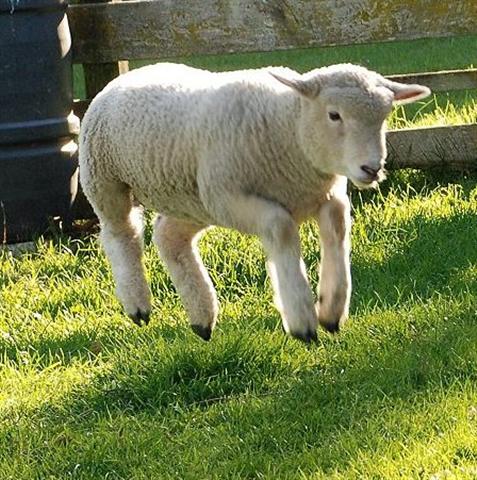 |
 |
 |
 |
|
Eb6-17 |
Eb6-18 |
Eb6-19 |
|
ka hakatu ma te rima |
hakapeka
hia te
tagata |
kiore - henua |
...Then the big Fish did swallow him, and
he had done acts worthy of blame.
Had it not been that he (repented and) glorified Allah, He
would certainly have remained inside the Fish till the Day
of Resurrection. - Qur'an, chapter
37 (As-Saaffat), verse 139–144.
But We cast him forth on the naked shore
in a state of sickness,
And We caused to grow, over him, a
spreading plant of the gourd kind.
And We sent him (on a mission) to a hundred thousand (men)
or more.
And they believed; so We permitted them to enjoy (their
life) for a while. - Qur'an, chapter 37 (As-Saaffat), verse
145–148 ...

|
Schedir (*8) |
Night of
culmination |
|
(80 + RA / 24h *
365¼) |
233 |
| Nov 18
(322) |
March 29 (88) |
|
365 - 235 = 130 |
|
Betelgeuze (*88) |
Night of
culmination |
138 |
(80 + RA / 24h *
365¼) |
225 |
|
Jan 29 (121 + 3 *
91 = 419 - 25) |
June 17 (168 → 88
+ 80) |
|
365 days = 20
weeks + 15 * 15 days |
|
Castor (*113 → 88
+ 25) |
Night of
culmination |
138 |
(80 + RA / 24h *
365¼) |
225 |
|
Febr 23 (419) →
Terminalia |
July 12 (200
- 7) |
|
365 days = 20
weeks + 15 * 15 days |
| |
|
Regulus (*152 →
212 - 60) |
Night of
culmination |
135 |
(80 + RA / 24h *
365¼) |
228 |
|
April 6 (96) |
Aug 20 (232) |
|
137 + 228 = 365
days |
|
Thuban (*212) |
Night of
culmination |
133 |
(80 + RA / 24h *
365¼) |
230 |
|
June 7 (168 - 10) |
Oct 19 (292) |
|
135 + 230 = 365
days |
|
Zuben Elgenubi
(*224) |
Night of
culmination |
135 |
(80 + RA / 24h *
365¼) |
228 |
|
June 17 (168 →
204 - 36) |
Oct 31 (304) |
|
137 + 228 = 365
days |
|
Ras Algethi
(*260) |
Night of
culmination |
135 |
(80 + RA / 24h *
365¼) |
228 |
|
July 23 (204 →
158 + 46) |
Dec 6 (340 → 292
+ 48) |
|
137 + 228 = 365
days |
|
Menkar |
Night of
culmination |
133 |
(80 + RA / 24h *
365¼) |
230 |
|
Dec 21 (355) |
May 4 (124) |
|
135 + 230 = 365
days |
|
Atlas |
Night of
culmination |
135 |
(80 + RA / 24h *
365¼) |
228 |
|
Dec 31 (365) |
May 16 (136) |
|
365 - 136 = 229 |

|


























